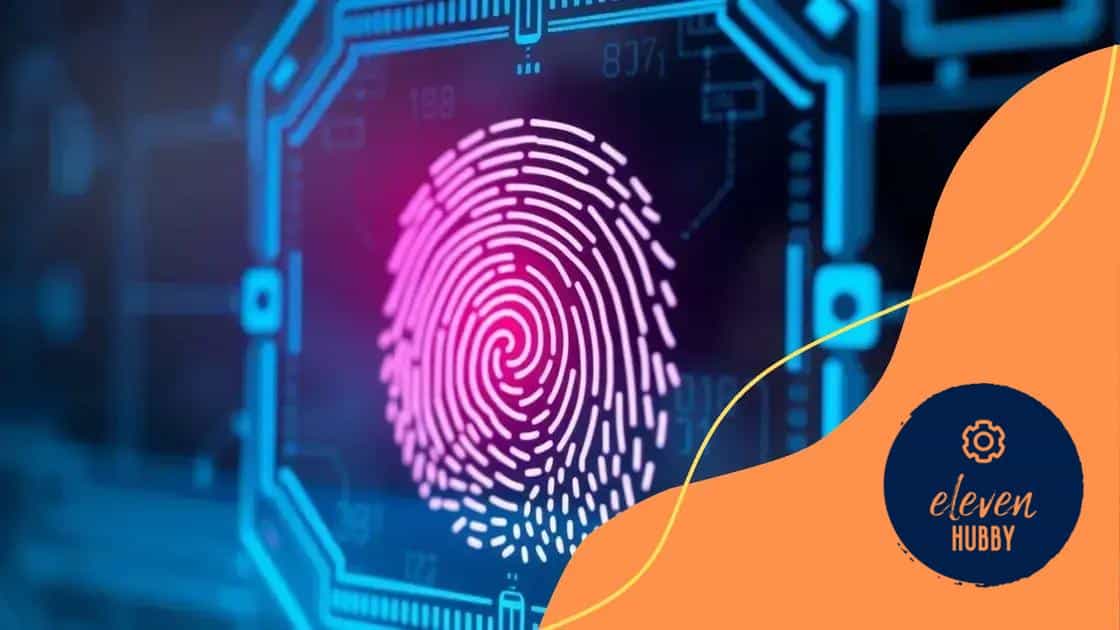Privacy concerns surrounding biometric data usage

Privacy concerns surrounding biometric data usage focus on the risks of identity theft, unauthorized access, and the need for stronger regulations to protect individuals from misuse as technology continues to evolve.
Privacy concerns surrounding biometric data usage have become a hot topic in our digital age. Have you ever wondered how your personal information is protected? In this article, we’ll delve into the complexities of biometric data and its implications for privacy.
Understanding biometric data
Understanding biometric data is essential in today’s technology-driven world. Biometric data refers to unique physical traits and behaviors that can be used for identification. This includes fingerprints, facial recognition, and even voice patterns. As technology advances, our reliance on these identifiers in various applications raises important questions about privacy and security.
What is biometric data?
Biometric data is any measurable physical or behavioral characteristic that can be used to identify an individual. Common examples include:
- Fingerprint scans
- Facial recognition software
- Iris patterns
- Voice recognition
The accuracy of biometric systems makes them increasingly attractive for security purposes, such as unlocking smartphones or accessing secure facilities. However, while these traits are unique to individuals, their storage and potential misuse pose significant concerns.
How is biometric data used?
Biometric data serves various purposes in both public and private sectors. Here are some key uses:
- Enhancing security systems in airports and buildings
- Streamlining access control to devices and networks
- Improving customer experiences in banking and retail
Despite the clear benefits of using biometric systems, they also present challenges. The ease of use comes with risks of hacking and unauthorized access to sensitive information. As a result, ongoing discussions about ethical guidelines and regulations are vital.
Additionally, the way biometric data is collected can vary significantly. Some systems require voluntary submissions, while others use surveillance without consent. This creates a complex web of ethical considerations that society must address as technology evolves.
Potential risks of biometric data misuse
Potential risks of biometric data misuse are increasingly concerning as the use of biometric technology grows. One major risk is data breaches. When biometric information is stored, it can be targeted by hackers, exposing sensitive personal details. Unlike passwords, biometric traits cannot be changed if they are compromised.
Types of misuse
There are several types of misuse that can occur with biometric data:
- Identity theft: Hackers can use stolen biometric information to impersonate individuals.
- Unauthorized access: Misused biometric data can grant access to secure systems without permission.
- Surveillance: Governments or companies might use biometric data for monitoring citizens without consent.
The implications of these misuses extend beyond individual privacy breaches. They can lead to a general sense of mistrust toward technologies that employ biometric data. For instance, if people feel they are constantly monitored, it may hinder their willingness to use beneficial technologies.
Legal and ethical concerns
Legal frameworks are struggling to keep pace with biometric technology. Most existing laws do not adequately protect individuals from the misuse of their biometric data. This gap allows companies to exploit biometric information without accountability.
Ethical concerns also arise around consent. Many users do not fully understand what it means to provide their biometric data. This lack of understanding can lead to unintentional agreements to misuse their personal information.
As we advance, developing robust regulations and ethical guidelines will be crucial in protecting individuals. Awareness of these risks is necessary for consumers and organizations to navigate the challenges and responsibilities of using biometric data.
Privacy laws and regulations

Privacy laws and regulations play a crucial role in protecting individuals from potential misuse of their sensitive biometric data. As biometric technology becomes common, understanding these laws is essential for consumers and companies alike.
Overview of existing laws
Many countries have developed laws to safeguard personal data, but these regulations vary widely. In the United States, there is no single federal law specifically regulating biometric data, leading to a patchwork of state laws. For instance:
- Illinois enacted the Bioethics Reporting Act, which requires consent before collecting biometric data.
- California has established regulations regarding biometric data within its Consumer Privacy Act.
- Texas also has laws to ensure that biometric information is securely stored and not misused.
These laws strive to balance the benefits of using biometric technology with the need to protect individual privacy. However, their varying scopes can create confusion and inconsistency.
Challenges with enforcement
Enforcing privacy laws can be challenging. One significant issue is the rapid pace of technological development. As new biometric technologies emerge, existing laws may not adequately address new types of data collection.
Another challenge involves jurisdiction. Global corporations often collect data across borders, making it difficult to enforce national laws consistently. This situation can lead to uneven protection for individuals, particularly in countries with weaker regulations.
Organizations must be aware of these legal landscapes. Failure to comply with privacy laws can result in severe penalties and damage to reputation, highlighting the importance of responsible biometric data management.
Balancing convenience and security
Balancing convenience and security is a vital concern in the modern world, especially as biometric technologies become more prevalent. While these innovative systems offer enhanced convenience for users, they also raise serious security questions.
The benefits of biometric technology
Biometric systems provide undeniable advantages, such as:
- Faster access: Users can gain entry quickly without needing passwords or PINs.
- Reduced fraud: Biometric traits are unique, making it harder to impersonate someone.
- User-friendly experiences: Many find it easier to use their fingerprints or faces than remember complex passwords.
This convenience often leads to increased user acceptance and adoption of biometric systems across various platforms, from smartphones to secure buildings.
The security risks involved
Despite these benefits, biometric data’s sensitivity means it can be a target for malicious actors. A significant risk is that, if biometric data is compromised, it cannot be changed like a password. Once a fingerprint is hacked, that individual is left vulnerable.
Furthermore, biometric systems can be deceived. For instance, advanced spoofing techniques can replicate fingerprints or even facial features. Organizations must constantly assess these risks against the convenience offered by biometrics.
To strike an effective balance, businesses should implement layers of security that complement biometric systems. Multi-factor authentication combining biometric methods with passwords or tokens can enhance security while maintaining user convenience.
Ultimately, the goal should be to create a secure environment that also respects user preferences for speed and ease of use, ensuring that individuals feel safe while enjoying the benefits of technology.
Future of biometric data privacy
Future of biometric data privacy is a topic that prompts many discussions as technology and regulations evolve. As biometric systems grow in popularity, understanding their implications for privacy is crucial.
Trends in biometric technology
Advancements in technology will likely shape how biometric data is collected and used. Some notable trends include:
- Increased adoption: More sectors, including healthcare and finance, are incorporating biometric systems for security and convenience.
- Enhanced security measures: Innovations like anti-spoofing technologies improve the reliability of biometric data.
- Integration with AI: Artificial intelligence can analyze biometric data more efficiently, providing more advanced security solutions.
These trends indicate that biometric technology will continue to become more integrated into daily life. However, with greater use comes the need for stronger privacy protections.
Privacy regulations on the rise
As biometric data usage expands, governments are starting to recognize the need for comprehensive privacy regulations. Countries worldwide are assessing and updating their privacy laws to protect citizens better. Stricter rules may include:
- Requirements for clearer consent before collecting biometric data.
- Enhancements in data security protocols to prevent breaches.
- Penalties for organizations that fail to protect biometric information.
Public awareness of privacy issues is also increasing. Individuals are becoming more knowledgeable about their rights regarding biometric data and are demanding transparency from organizations. Companies will need to adapt to this shift by ensuring they handle biometric data responsibly.
Looking ahead, successfully balancing technological advancements with user privacy will be vital. Organizations that prioritize ethical practices and compliance with emerging privacy regulations will likely find greater trust and acceptance from consumers. This balance between innovative biometric solutions and user trust will define the future landscape of privacy in biometric data.
FAQ – Frequently Asked Questions about Biometric Data Privacy
What are biometric data?
Biometric data are unique physical traits like fingerprints, facial recognition, and voice patterns used for identification.
How does biometric technology enhance security?
It allows for quick access while reducing the risk of impersonation since biometric traits are unique to individuals.
What are the risks of biometric data misuse?
Risks include identity theft, unauthorized access, and potential misuse for surveillance without consent.
How are privacy laws evolving in relation to biometric data?
Governments are updating laws to ensure better protection, requiring clearer consent and implementing stricter penalties for violations.






